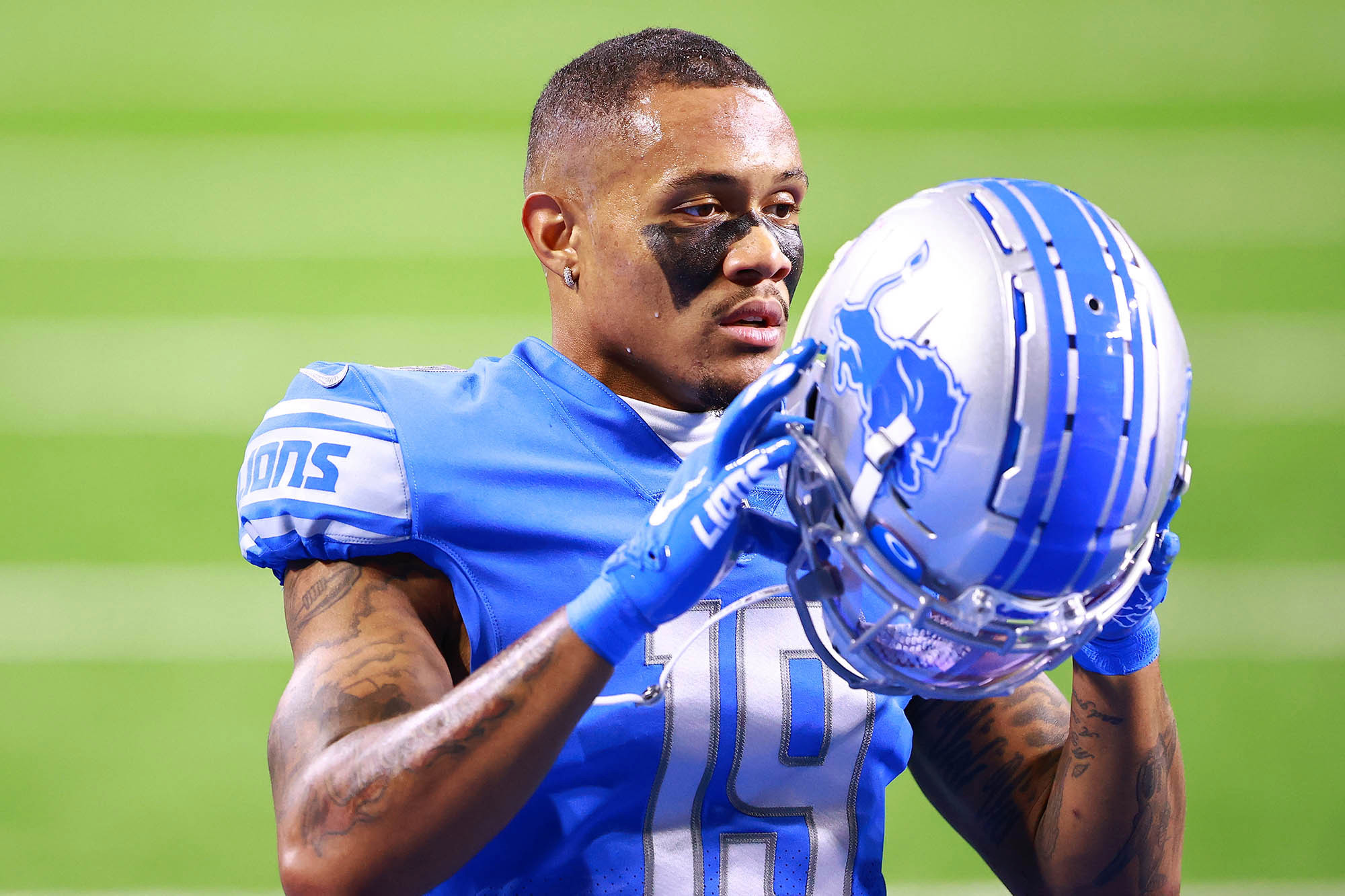More On: kenny golladay
Giants get some good Kenny Golladay news after injury scare
Kenny Golladay flashes for first time at Giants camp
Giants’ Kenny Golladay may be held in contempt of court
Daniel Jones-Kenny Golladay chemistry starting to build at Giants camp
Giants’ fancy new pieces may not matter if offensive line gamble fails
You’re already familiar with “career years” and “walk years,” but the NFL recently reintroduced “voidable years” into the sports jargon. The Giants became the latest team to
You’re already familiar with “career years” and “walk years,” but the NFL recently reintroduced “voidable years” into the sports jargon.
The Giants became the latest team to participate in salary-cap creativity when they broke their traditional contract mold and signed wide receiver Kenny Golladay to a four-year, $72 million contract that included a $17 million signing bonus as part of his first-year, $28 million guaranteed payment. The deal includes a “voidable” fifth year, per a source.
NFL contracts typically are made up of three financial elements: Salary, roster/workout bonuses and signing bonus. Unlike the others, the signing bonus is prorated on the salary cap over the life of the contract up to five years, so adding voidable years to the end of a contract allows the annual charge to be lowered.
For example, the Giants lowered Golladay’s amortized bonus charge from $4.25 million over four years to $3.4 million over five years. Add in his salary for the full cap charge.
Another example is the Buccaneers reportedly saving $19 million against the 2021 cap by signing Tom Brady to a four-year extension that voids to one year. The Saints, Steelers and Cowboys are at it, too.
Teams made a concerted effort to move away from using voidable years after the rookie wage scale was implemented in 2011, but the uniqueness of this offseason necessitated the return of circumventive accounting, one team executive told The Post.
It has created a lot of questions. Here are some answers:

What are voidable years?
A salary-cap workaround, much like converting large salaries into signing bonuses for the purpose of spreading out a big cap charge. It doesn’t affect the player’s cash flow and kicks the can down the road for the team.
When did it start?
Super-agent Leigh Steinberg introduced voidable years when negotiating for No. 1 draft pick Drew Bledsoe in 1993. When signing Bledsoe to his second contract in 1996, Patriots owner Robert Kraft said, “I never want to hear the term ‘voidable’ again.” What’s old is new again!
“The league stepped in in 1996 and argued against it,” Steinberg told The Post. “It’s in the interest of the player to pull out as much bonus as possible because that’s guaranteed money. If you give a huge salary, a team is going to have a hard time fitting under the cap number. The player gets the bonus but never has to play out the string – and can come back and get whatever the veteran salaries are at the time.”
Why is it suddenly so popular?
Because teams were doing business for years expecting the 2021 salary cap to be around $210 million. Instead, it dropped from $198 million in 2020 to $182.5 million because of lost revenues due to COVID-19, so most teams were left cap-strapped and looking for ways to create space.
The new media rights deals that are worth more than $100 billion, including Amazon’s acquisition of “Thursday Night Football” rights, are supposed to push the cap back to its regular inflation rate (or better). So, the extra year’s cap charge at the end of a contract could be relative peanuts by then.
To the NFL, the value of a dollar in 2021 isn’t the same as a dollar in 2023 or 2025. It’s seen as a win-win for the team and player.
What happens when a contract voids?
All the remaining bonus money is accelerated into that year’s cap. So, a five-year contract with a $20 million signing bonus – $4 million per year – that voids after two years means the remaining $12 million will hit the cap in the third year. Annual salaries typically are not guaranteed in the final years of a contract.
Can a player actually play on a voidable year?
No. A new contract is needed.
What mechanism triggers the void clause?
It’s not even something as foregone a conclusion as playing a certain number of games or some low statistical output, as was the case with Steinberg and Bledsoe. The void nowadays is automatic if a player is on the roster on a specified date, according to another team executive.
What’s the risk?
Dead cap space and winding up in salary-cap hell like the 2021 Eagles and Saints.
All money spent has to be accounted for eventually. So, in the case of the Giants and Golladay, if the contract works out great, they are signing up for at least $3.4 million dead cap space in 2025. If it doesn’t, it’s more and sooner.
But recent trades – including the Giants dealing away Jason Pierre-Paul and Odell Beckham – show teams are more willing than ever to operate with dead cap space.
This story originally appeared on: NyPost - Author:Ryan Dunleavy






















